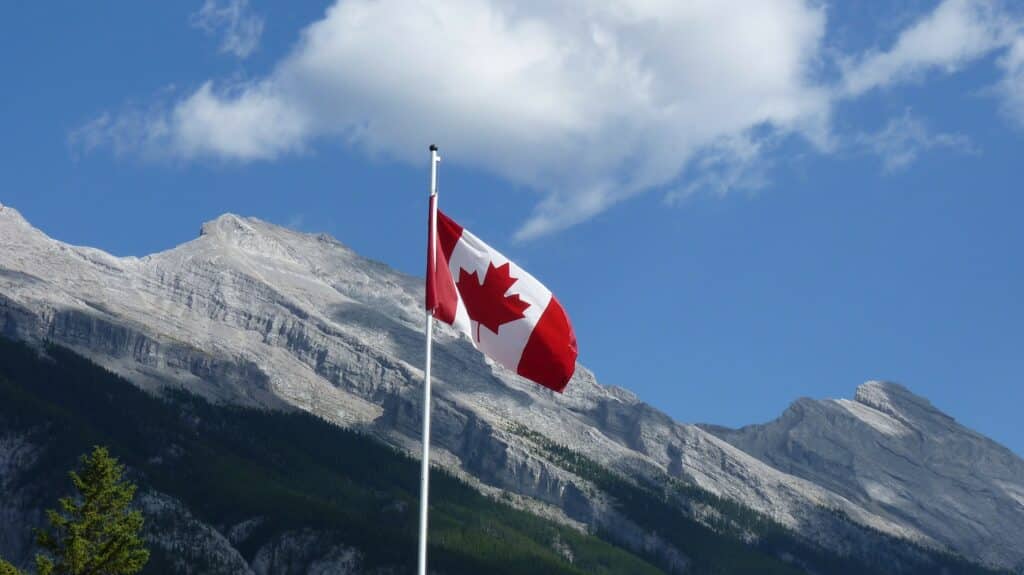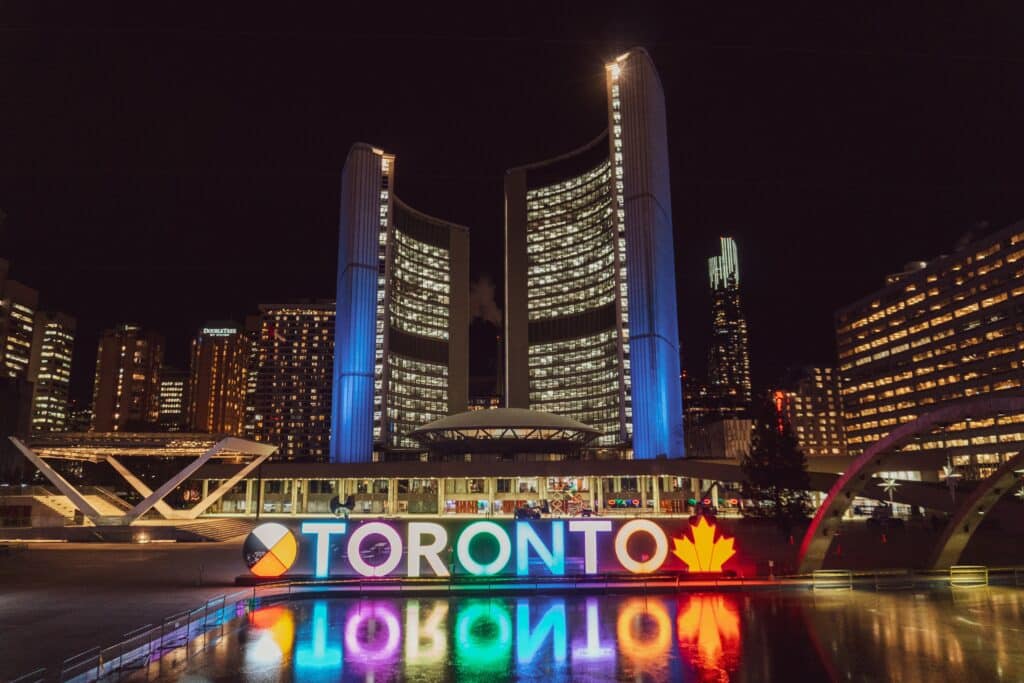If you have family or friends in Canada, you’ll need to know the correct calling codes to give them a ring. Here at Remitly, we want to help you understand how these calling codes work so you can stay in contact with your loved ones.

Phone number basics
Most phone numbers in Canada and other parts of North America have ten digits. This local phone number is connected to a specific person or location when dialed together.
After you enter the correct country code, the next three numbers you’ll dial are called area codes. These numbers are attached to a smaller region or area associated with those specific series of numbers specific to a particular province (for Canada) or state (for the United States).
Finally, the last four digits of telephone numbers are unique to each individual and are a random combination that identifies the person by phone number.
What are calling codes?
Calling codes are a vital part of every telephone number. These codes are required for all local and international telecommunication networks worldwide. They may also be called country calling codes, country dial-in codes, or international dialing codes (ISD).
The purpose of these Canada phone codes (and every other country) is to attach a numerical prefix to every phone number so you can reach people in different countries around the world. Let’s break down each type of calling code and what it means.
- Country codes are numbers you’ll need to dial before calling a specific country and are assigned to different regions. For example, North America uses Zone 1, Africa uses Zone 2, Europe uses Zones 3 and 4, and so on. Therefore, Canada’s country code is the number 1.
- Area codes are the first three digits of every telephone number and apply to various regions within a country or state.
- International calling codes (or international prefixes) are specific series of numbers used to call someone who lives outside of the country you’re in. When you call someone in another country, you’ll need to include these codes before you dial the phone number to make an international call.
Canada country codes
The Canada country code is the number 1. Canada’s calling code is specifically assigned to Canada, America, and other portions of North America outside of these two countries, including Puerto Rico and Bermuda.
This specific code is referred to as Zone 1, and it’s part of the North American Numbering Plan (NANP).
Whenever you’re outside of Canada, you’ll need to include this country code to call Canada before you dial a phone number with a cellphone. Start by pressing the + symbol before you dial the country code, then press the number 1. This will indicate you plan to call someone in this specific calling zone.
After dialing + and the number 1, you’ll need to dial the three-digit area code and the seven-digit phone number. If your phone isn’t registered in Canada, you’ll need to follow these steps whenever you want to call a person or business in Canada.
Let’s say you need to call a friend who lives in Montreal, and you live in a different country. The Canadian phone number you dial would look like this: +1(263)-XXX-XXXX. This same process applies if you need to text someone in Canada, so you’d enter the number the same way before sending them a text.
If you are calling Canada from a landline phone, you’ll need to dial the international calling number instead of the + symbol and the country code. For example, if you’re in the UK, Italy, or China, you’d simply dial 00 before the appropriate area code and phone number. If you’re in Japan, you’d dial 010, and so on, depending on your location.
Canada area codes
Canada’s area codes consist of three numbers associated with specific locations. It’s vital to ensure that you have the right area code before dialing the phone number after it. Canada currently has a total of 50 area codes, but some parts of Canada didn’t have them at all back in 1947 when area codes were first created.
Here is a list of Canadian area codes by province:
- Alberta: 368, 587, 780, 825, 403
- British Columbia: 778, 250, 604, 672, 236
- Manitoba: 584, 204, 431
- New Brunswick: 506
- Newfoundland: 709
- Northwest Territories: 867
- Nova Scotia: 902, 782
- Nunavut: 867
- Ontario: 613, 683, 753, 807, 249, 705, 343, 519, 647, 905, 226, 437, 548, 742, 289, 365, 416
- Prince Edward Island: 782, 902
- Quebec: 873, 367, 418, 450, 514, 581, 819, 468, 263, 354, 438, 579
- Saskatchewan: 306, 639, 474
- Yukon: 867

Calling codes for Canadian Territories
Three Canadian area codes cross certain provincial or territorial boundaries. These three cross-province boundaries include area code numbers 782, 867, and 902.
The area code 782 applies to Nova Scotia and Prince Edward Island. Area code 867 applies to the Yukon, Nunavut, British Columbia, and Northwest Territories, while area code 902 also serves specific portions of Nova Scotia and Prince Edward Island.
Special calling codes in Canada
Aside from country codes, area codes, and international calling codes, some special-purpose calling codes are used in Canada. Toll-free numbers, free of charge, will have a different three-digit prefix from a standard area code.
The most common toll-free prefix is 800, which has been in operation for 30 years before telephone number combinations ran out. Now, additional prefixes for calling toll-free numbers in Canada include 833, 844, 855, 866, 877, and 888. Extra numbers are also being planned for use in the future.
If you’re currently in Canada, you may need to dial emergency services. In this case, you’d dial 911 from any smartphone or landline. This is the same number used to reach emergency services in the United States.
To contact directory assistance, dial 411 if you are in the United States, Canada, or parts of the Caribbean. These three digits are called N11 codes. They’re used in abbreviated dialing as part of the North American Numbering Plan.
International dialing codes from Canada
If you are currently in Canada but need to make an international call to another country, you’ll need to use specific international dialing codes. To call somewhere outside of Canada, you’ll use the prefix 011. Next, dial the country code, area code, and the telephone number.
An example of making an international call from Canada would look something like this:
011 + country code + area code + phone number, or (011)(1)(XXX)-(XXX)-(XXXX).
This process usually applies when you dial from a landline, but it may also apply to cellphone calls, depending on your location and cellphone service provider. International calling rates will vary depending on your telephone carrier and plan.
If you’re calling someone in the Caribbean from Canada, you won’t need to dial the international dialing code, but you will need to dial the number 1 before the area code and phone number.
Mobile phone codes
If you’re using a mobile phone to call someone in Canada, use the same processes listed above. All cell phone numbers in Canada still have a specific Canada area code attached to them that must be dialed before the phone number.
Like in many other developed countries, cell phone usage in Canada is growing rapidly. Approximately four in every five Canadians, or 80%, owned a smartphone in 2018. That number increased to 84% by 2020 and is likely even higher today.
Troubleshooting common dialing issues
The process is fairly easy when making international calls to someone in Canada via telephone. However, you may encounter some issues when making an international call.
Here are some quick troubleshooting tips to help you address common dialing issues when calling within or to Canada:
- Always verify that you have the correct phone number before making a call.
- Check to ensure that you’re using the right country code and area code.
- Make sure you’re dialing the appropriate international dialing code or country code before you enter the area code and phone number.
- Confirm that your plan allows for international calls if you’re using a cell phone.
Conclusion
Calling someone in Canada is easy as long as you understand how calling codes work. Once you’re familiar with this series of numbers, you can confidently dial anyone living in Canada. Remember to use the appropriate country or international code, area code, and the correct phone number for a stress-free experience.
Looking for more information about Canada? Check out this complete guide on how to get citizenship in Canada.
